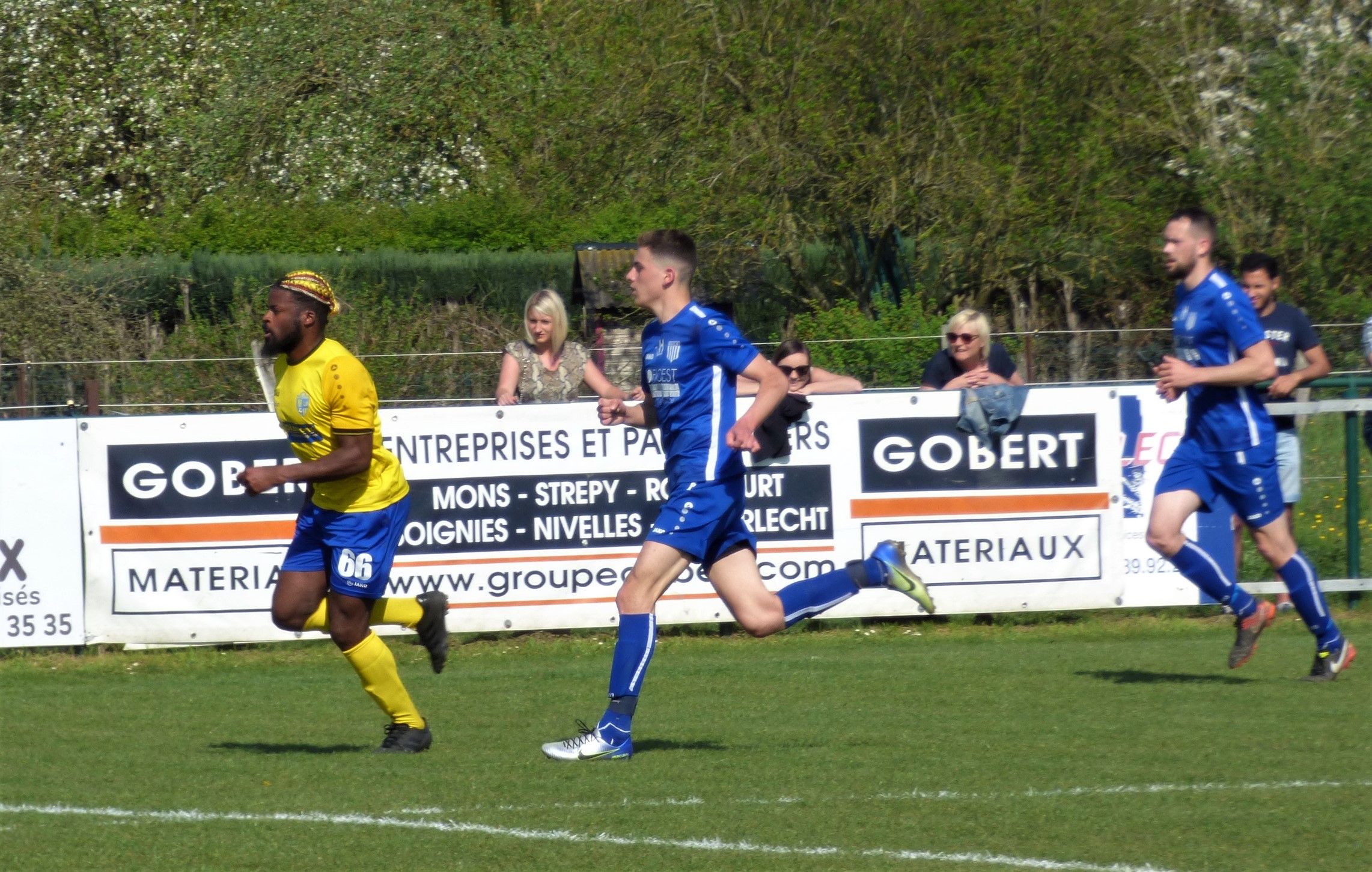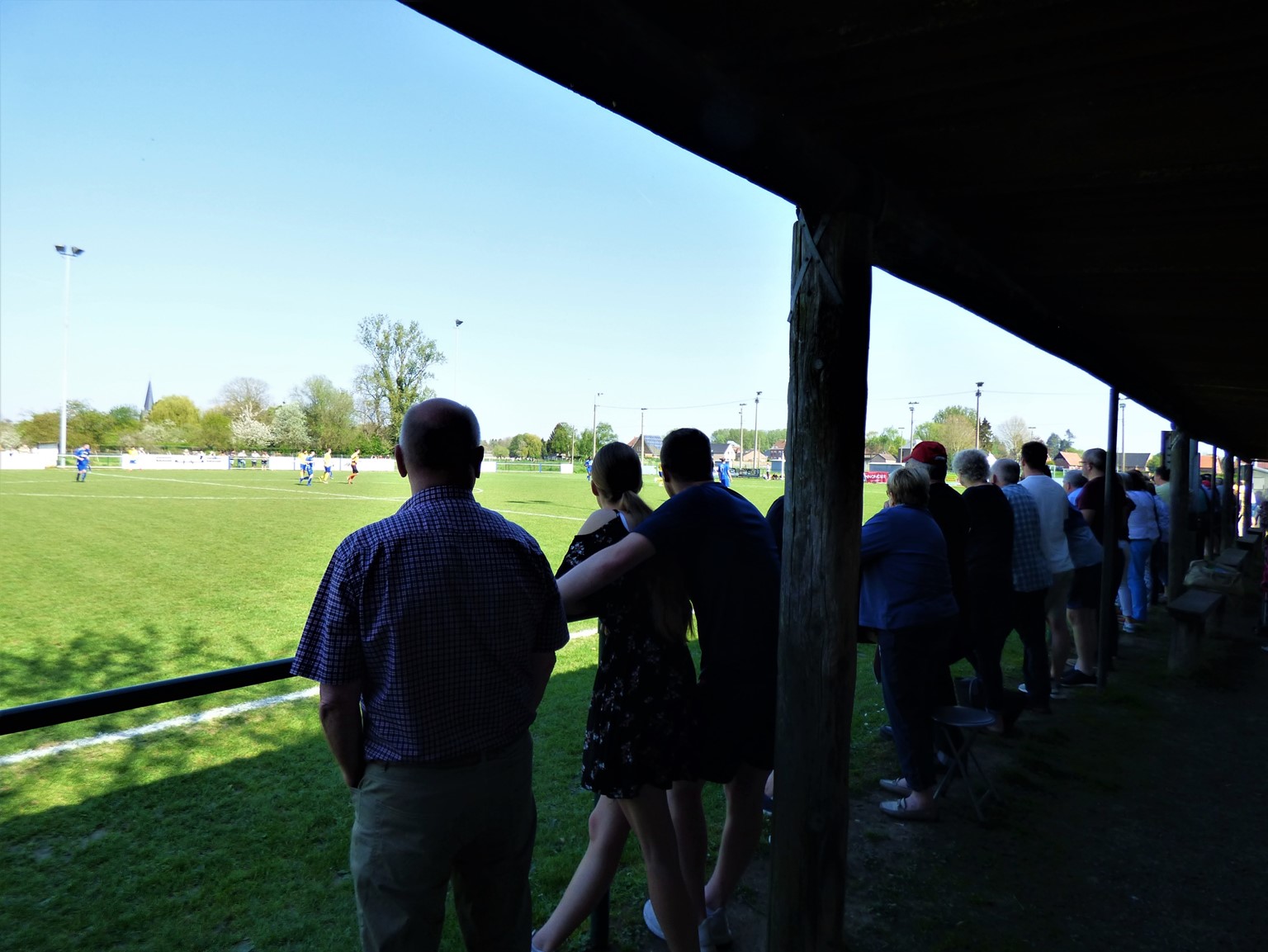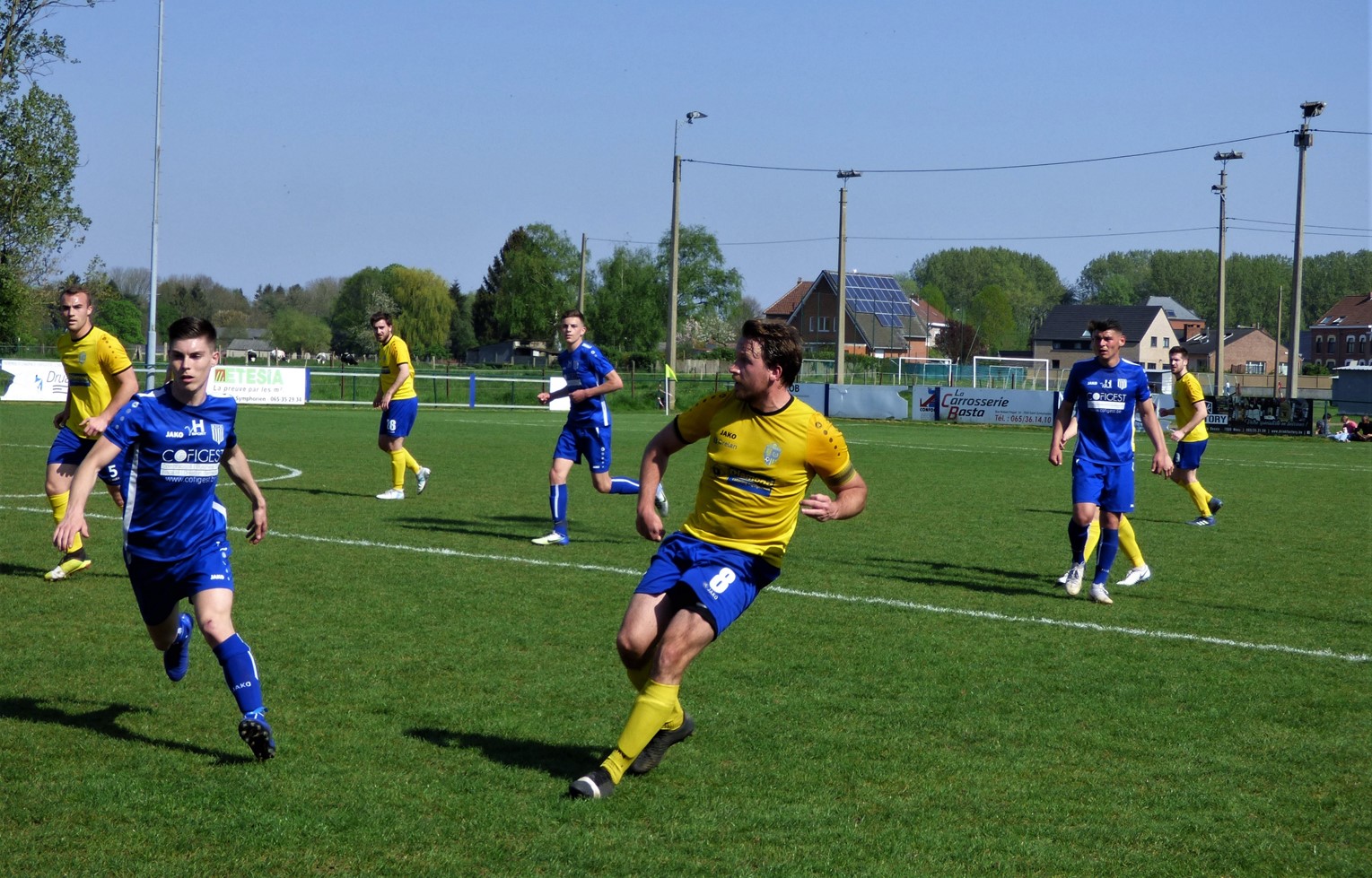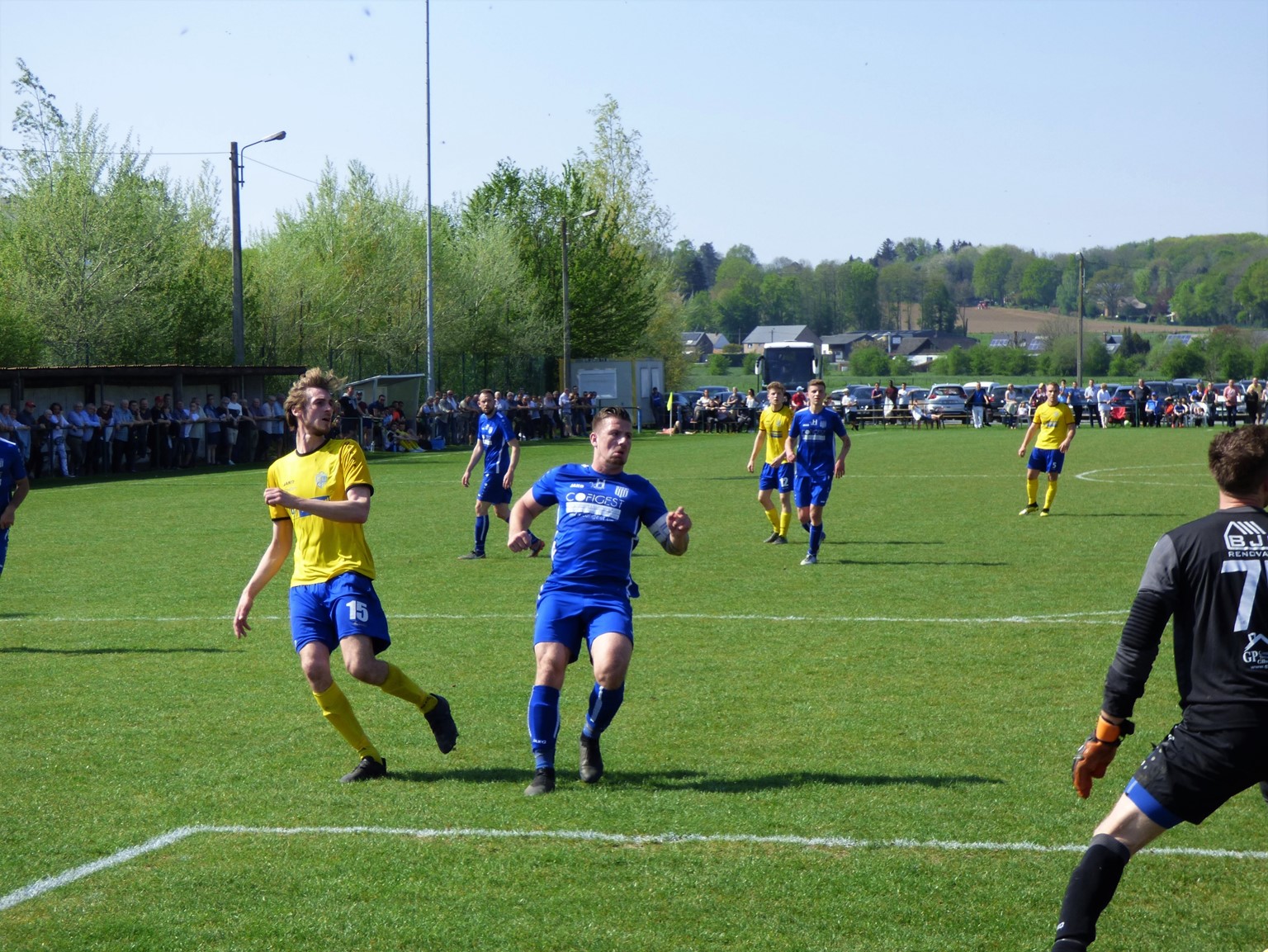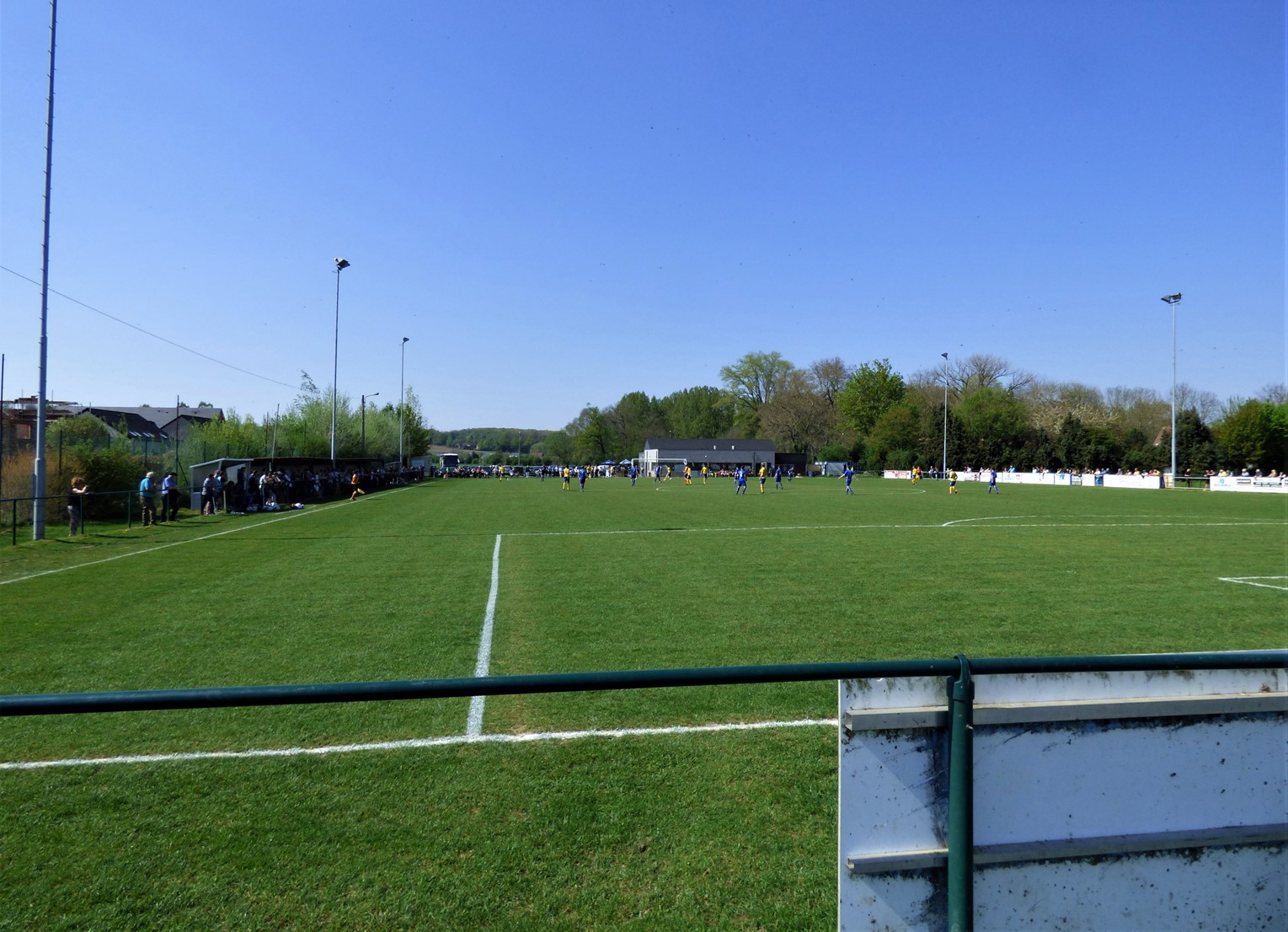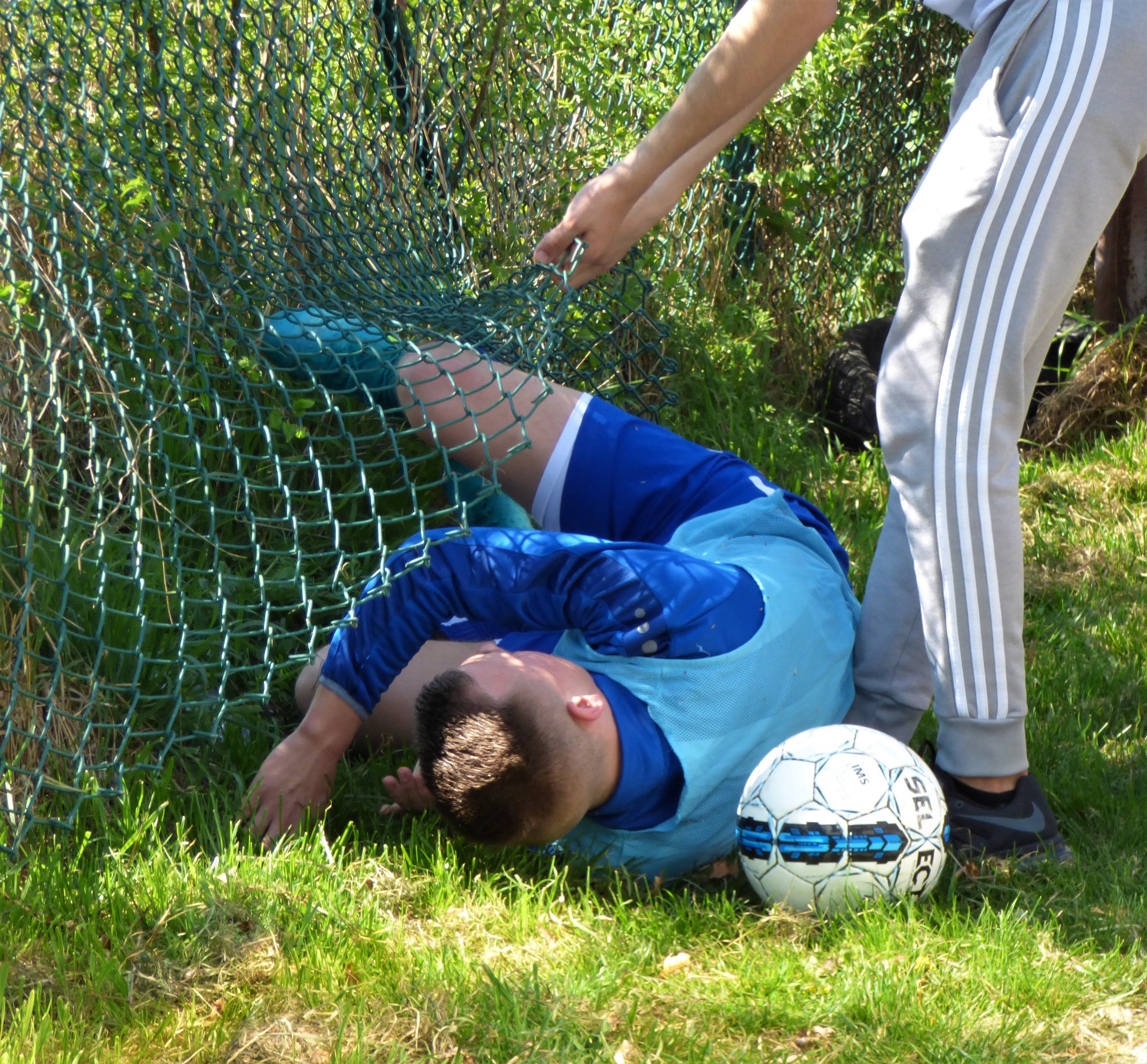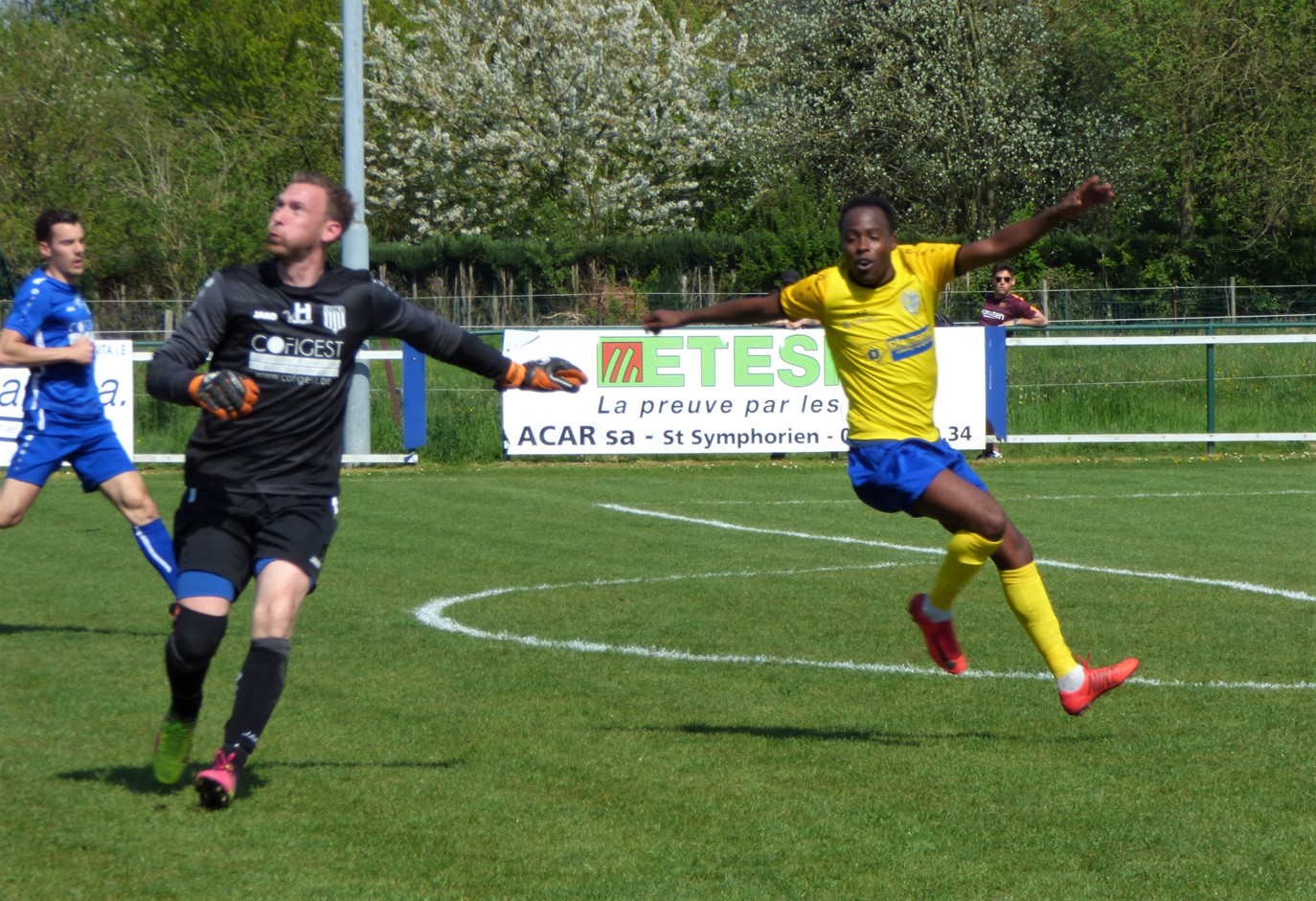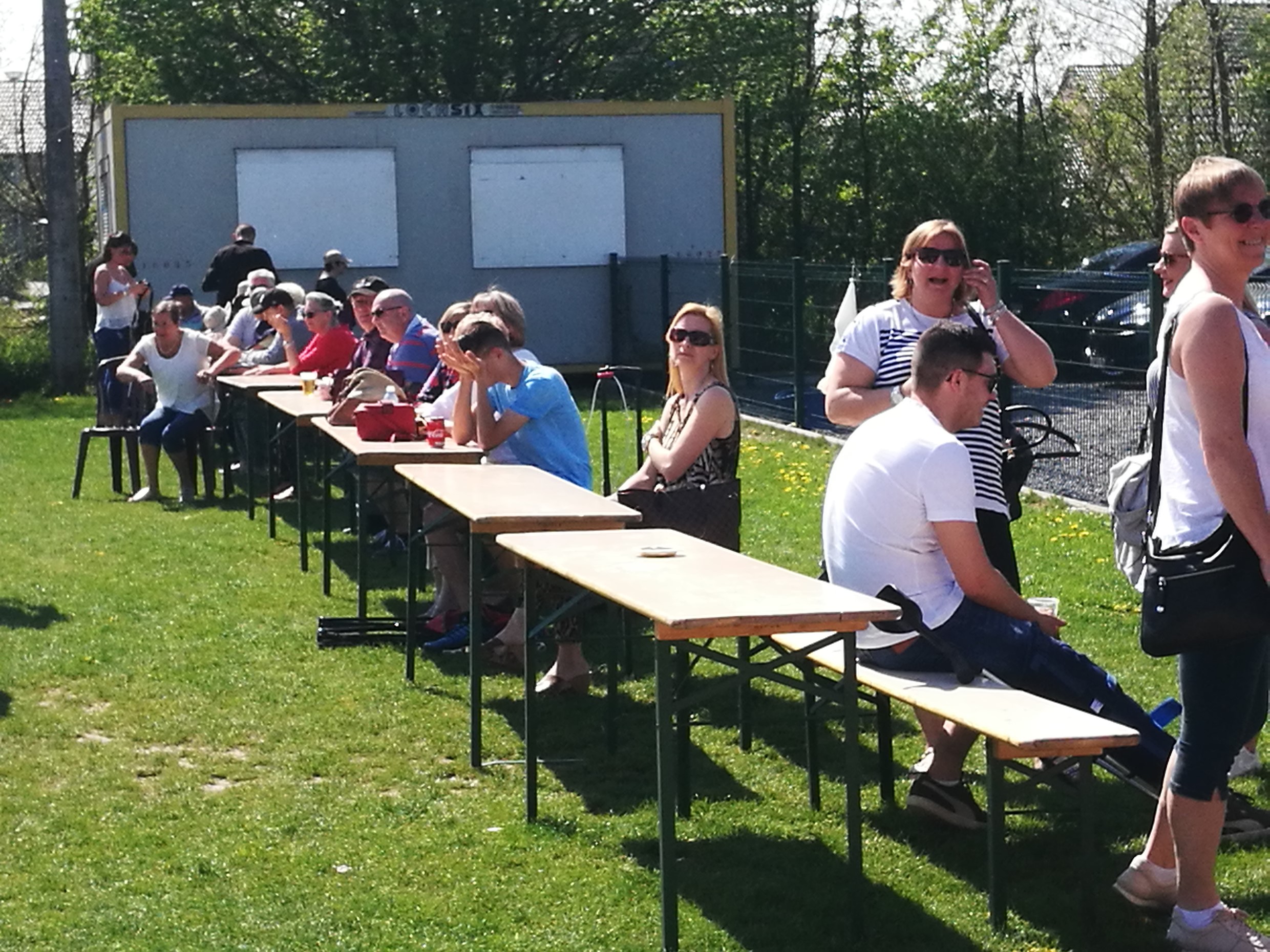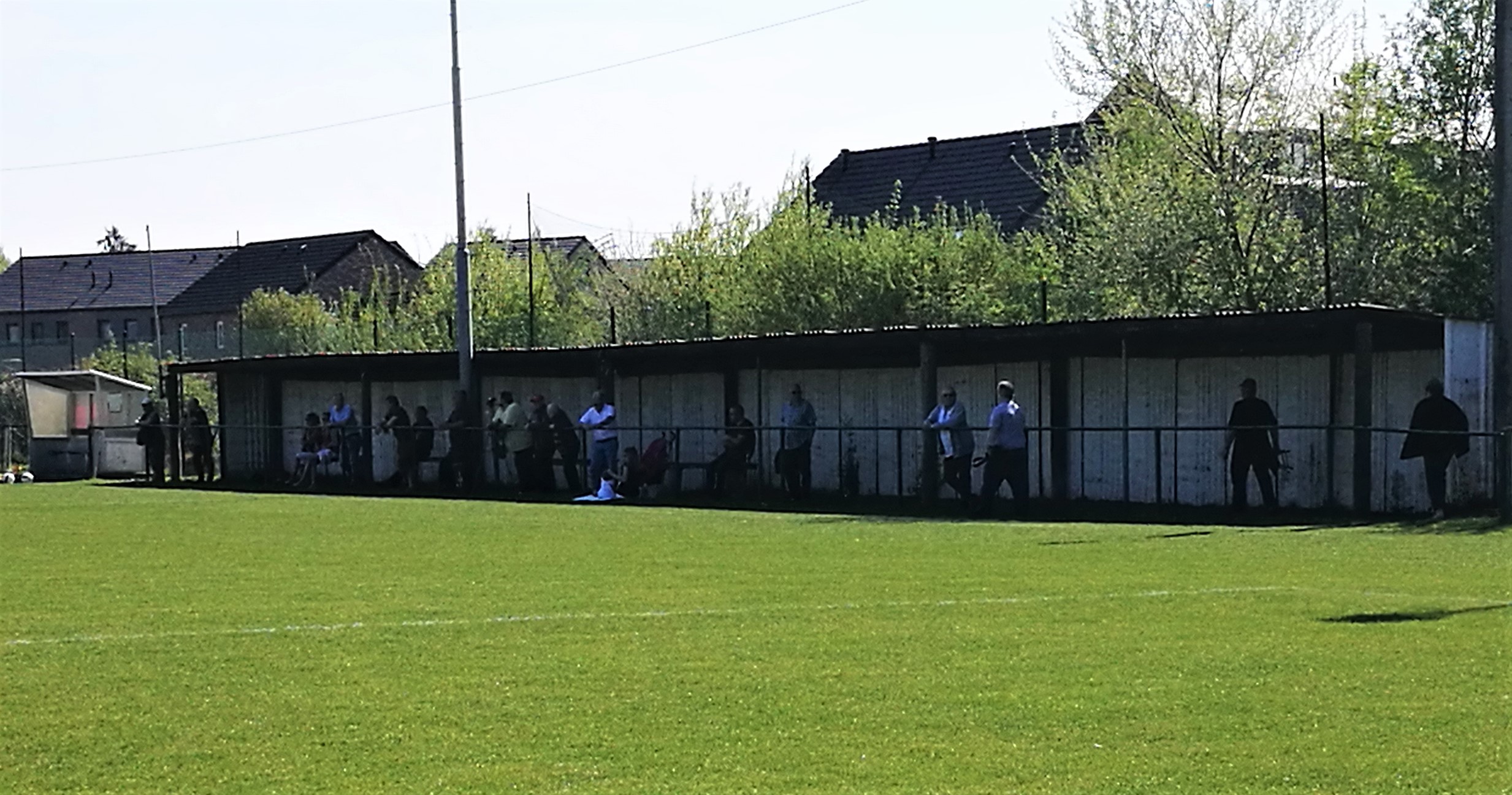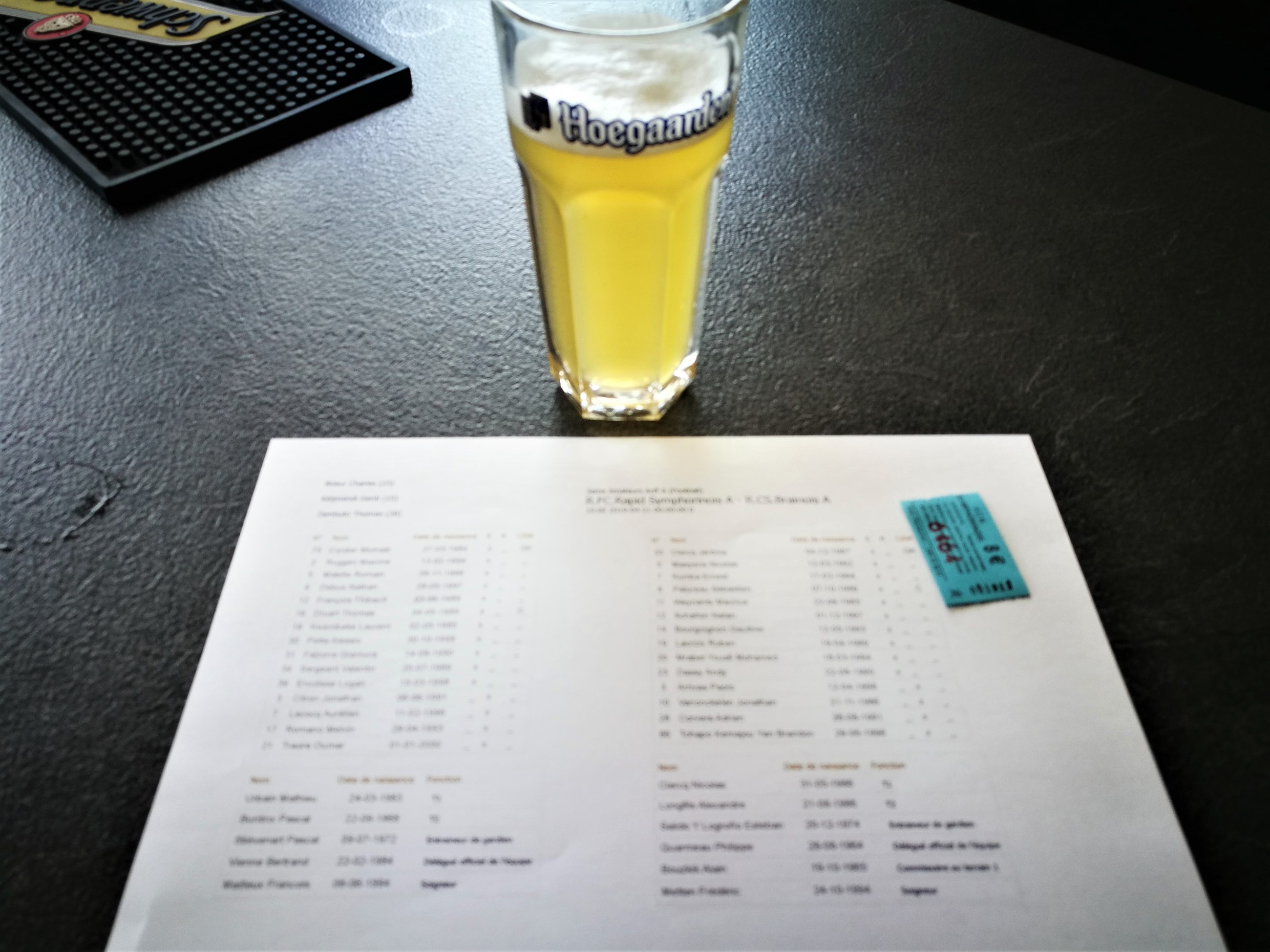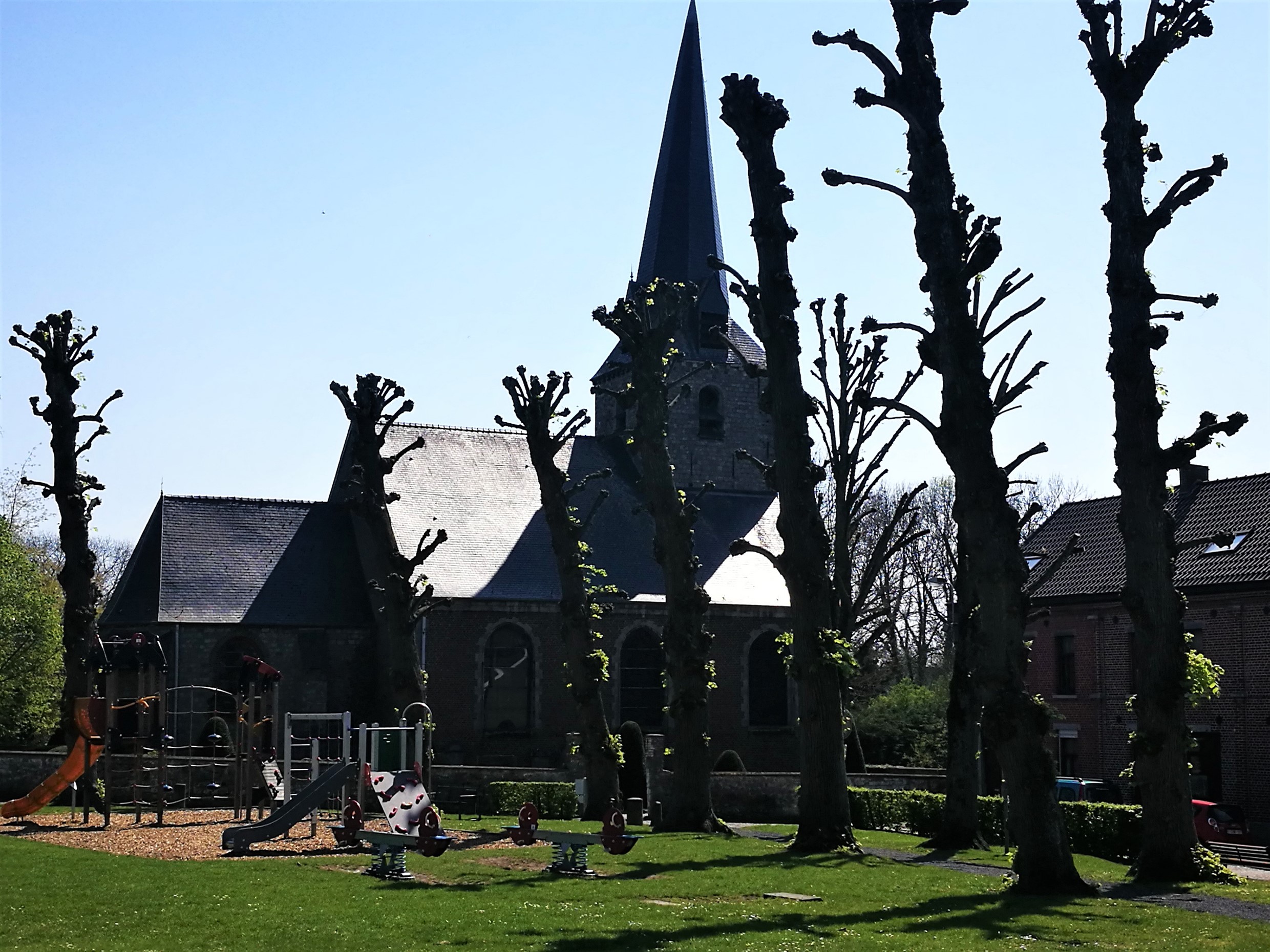The 4000.
It has to be typical of my record that a landmark number, the 4000th ground ticked should come courtesy of two low level matches in France. I had thought of slowing down for a week, so as number 4000 would be the new Spurs ground – but stuck to my standard plans, so it should be 4004.
I had a pleasant enough drive to Hauts-de-France, finding a route that avoided most jams, and also avoided all but one section of toll road. The last section, €2.10 south of Rouen for a 10-minute saving is a regular toll for me.
I still pitched up in Vimy over an hour before kick-off and took some time to wander around the town. There is little here to suggest it was a mining town, and you do not see the old slag heaps until you take the roads north from here. The name of the ground, Stade de la Mine, does give it away a little
This is a large ground, with four pitches. Two of these have cover. The one nearest the entrance has a long building providing cover in front. The whole pitch has an old, concrete railing around it and I suspect it was the main pitch at sometime in the past. It was being used for Junior games on the day.
The main pitch is above this, with a very modern concrete stand and a club room at the top. This has carefully used the slope the area is built on, so as you can exit at the back of the clubhouse to an area that includes parking, although this is not used.
The main pitch is one sided, with standing accommodation in front of, and both sides of the stand. Team benches and protection of the team tunnel provide marginal loss of viewing. The other three sides of the ground are accessible, but are surrounded by high mesh fences which make viewing poor
The game was at Regional 1 level, the sixth tier of French football. There are two groups in Hauts-de-France, a northerly one that is for clubs that were in the old Nord Pas de Calais region and one for the Picardie area. With three promotion places available, I am not certain how the second teams are rated.
US Vimy are the second team, but a win in this catch up game would put them in with a chance of catching league leaders Valenciennes II. USM Waziers were mid-table. US normally stands for Union Sportive in French club names, USM means Union Sportive des Miners – another reference to coalmining in this region.
The match was entertaining in places, and it was good to hear support from both sides in the 200 or so watching. However, this is France so it was not surprising that it was ultimately frustrating. Waziers forced a save with an early free kick but rarely threated to get closer. Vimy dominated the proceedings but actually only put in two shots that the visiting keeper needed to save as well as hitting the post in the first half.
The rest of their play involved losing the ball due to poor crossing or taking a pot shot against the protective fencing from a point outside the area.
I had given up on the idea of a goal long before the inexplicable eight minutes of injury time. To my surprise, Waziers who looked happy to take the draw did not disrupt this with substitutions. It is rolling subs at this level but not only did they not roll in this game, we only had five of the six available between the teams take to the field.
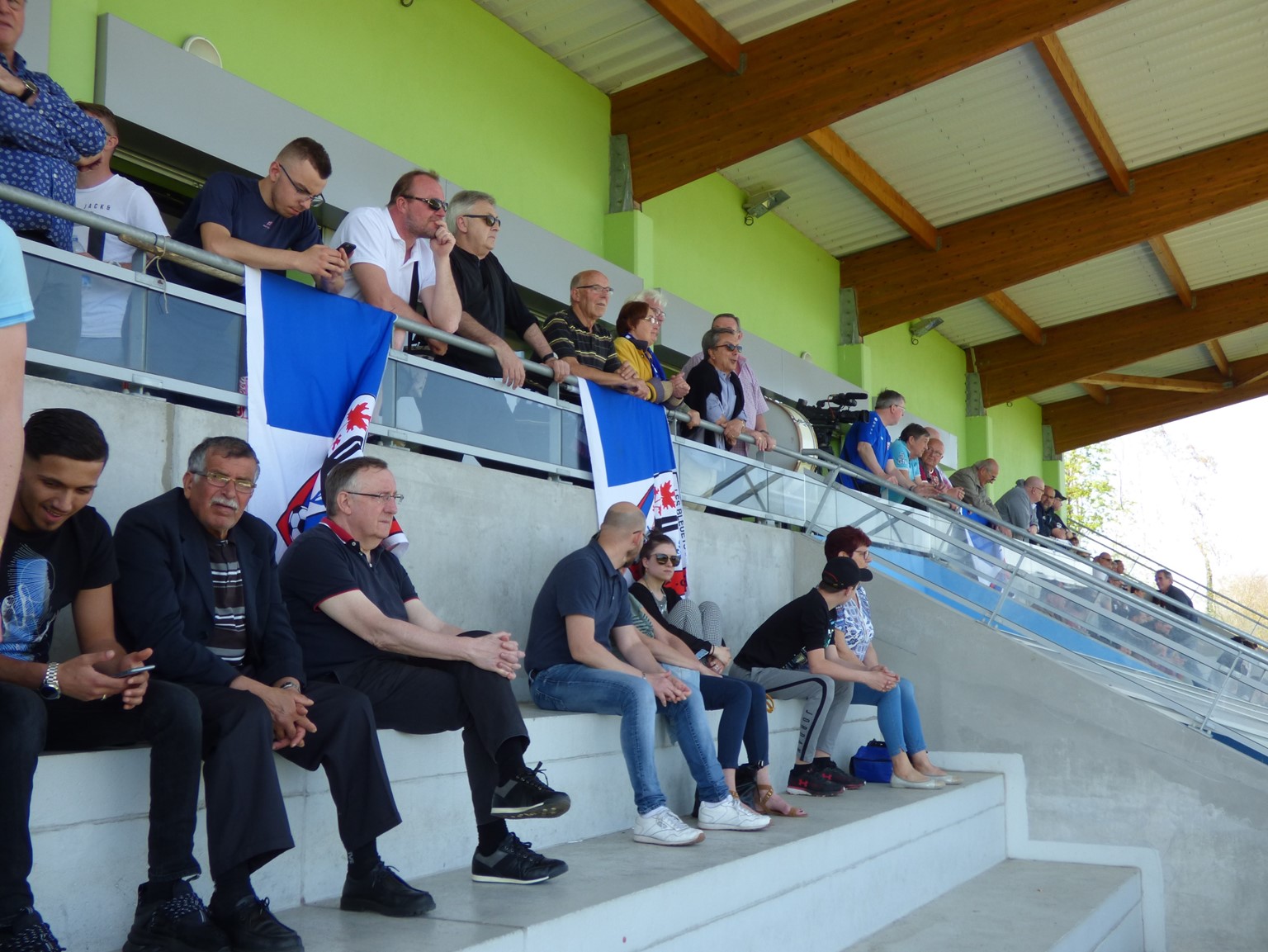
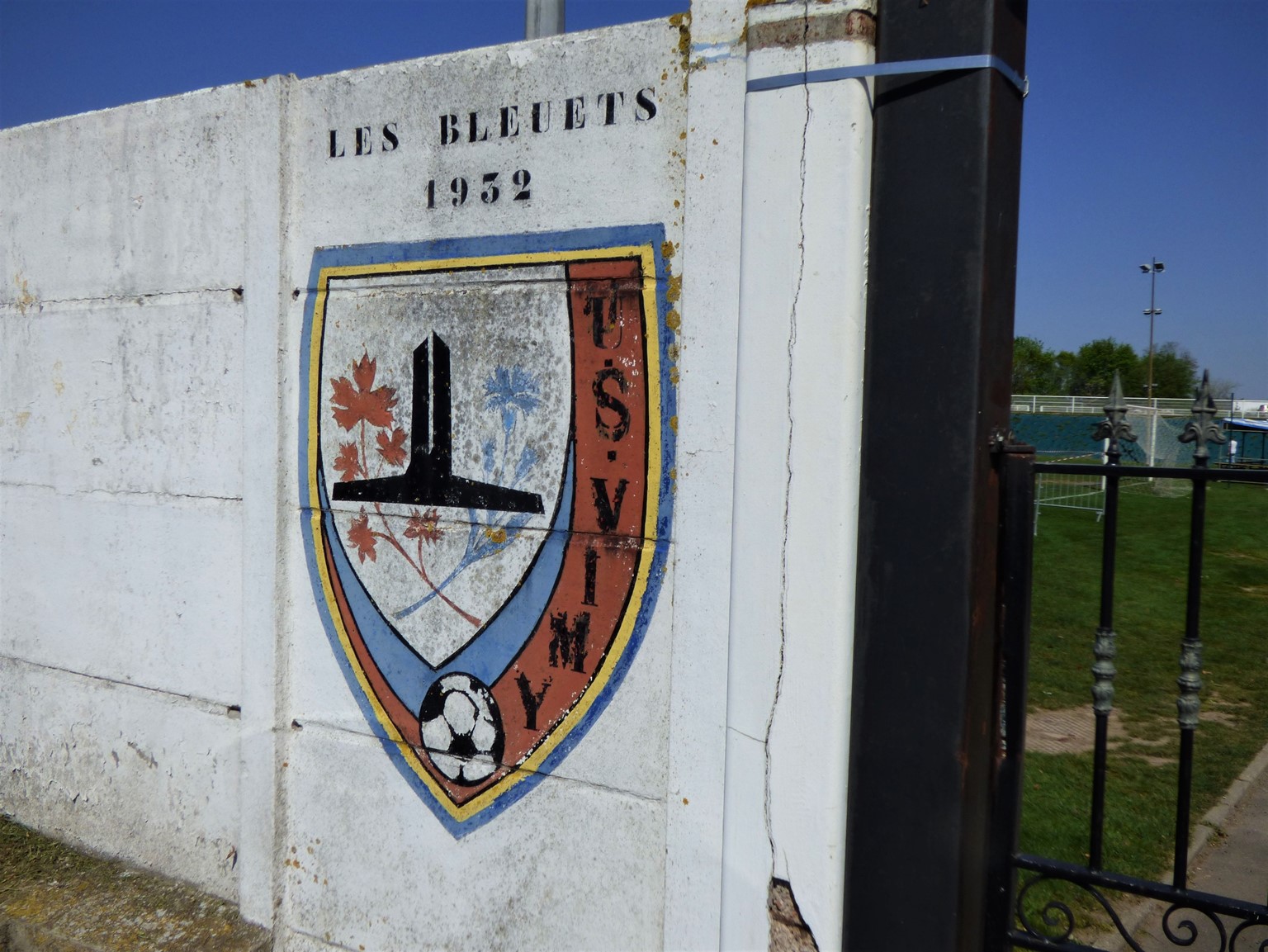
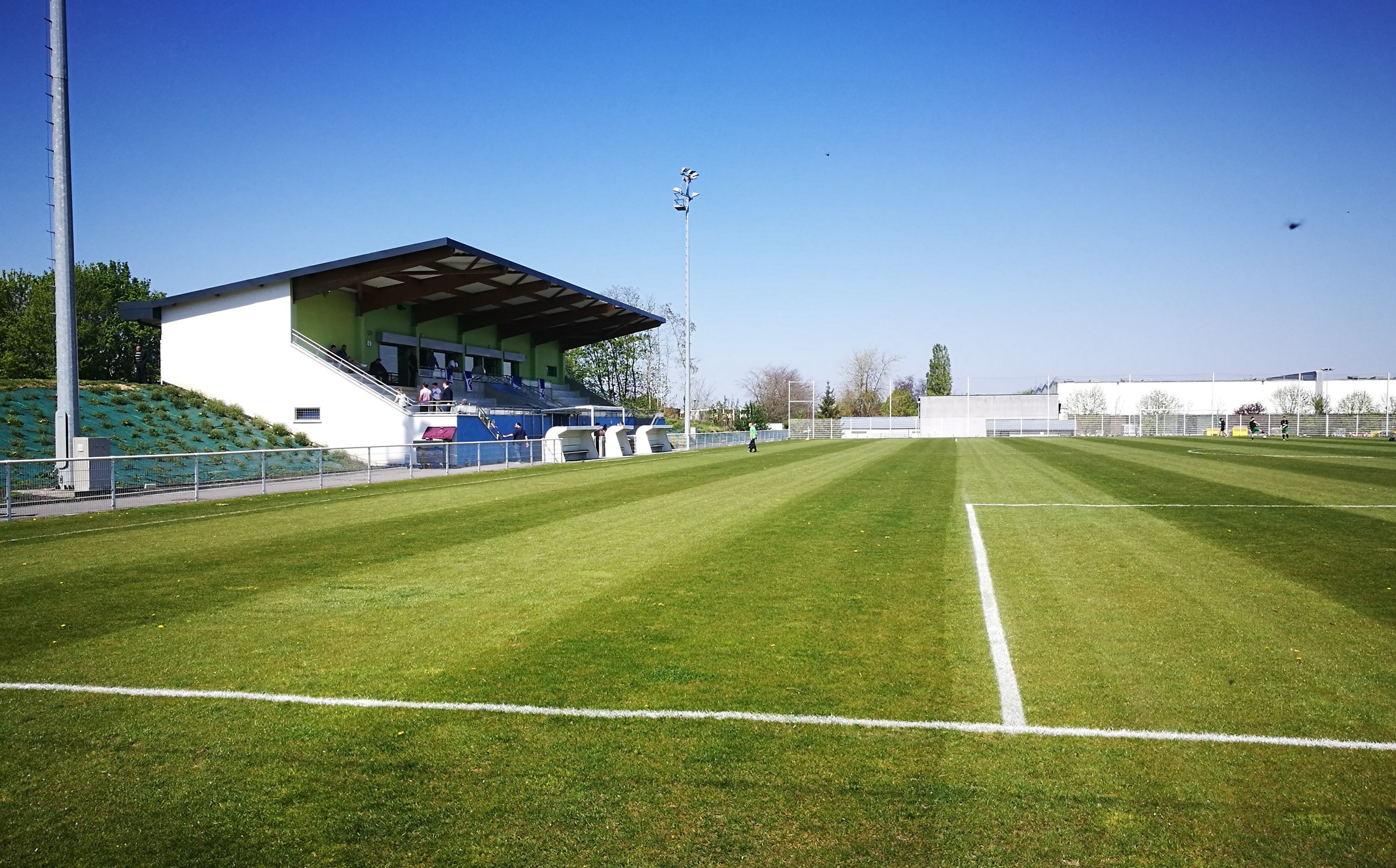
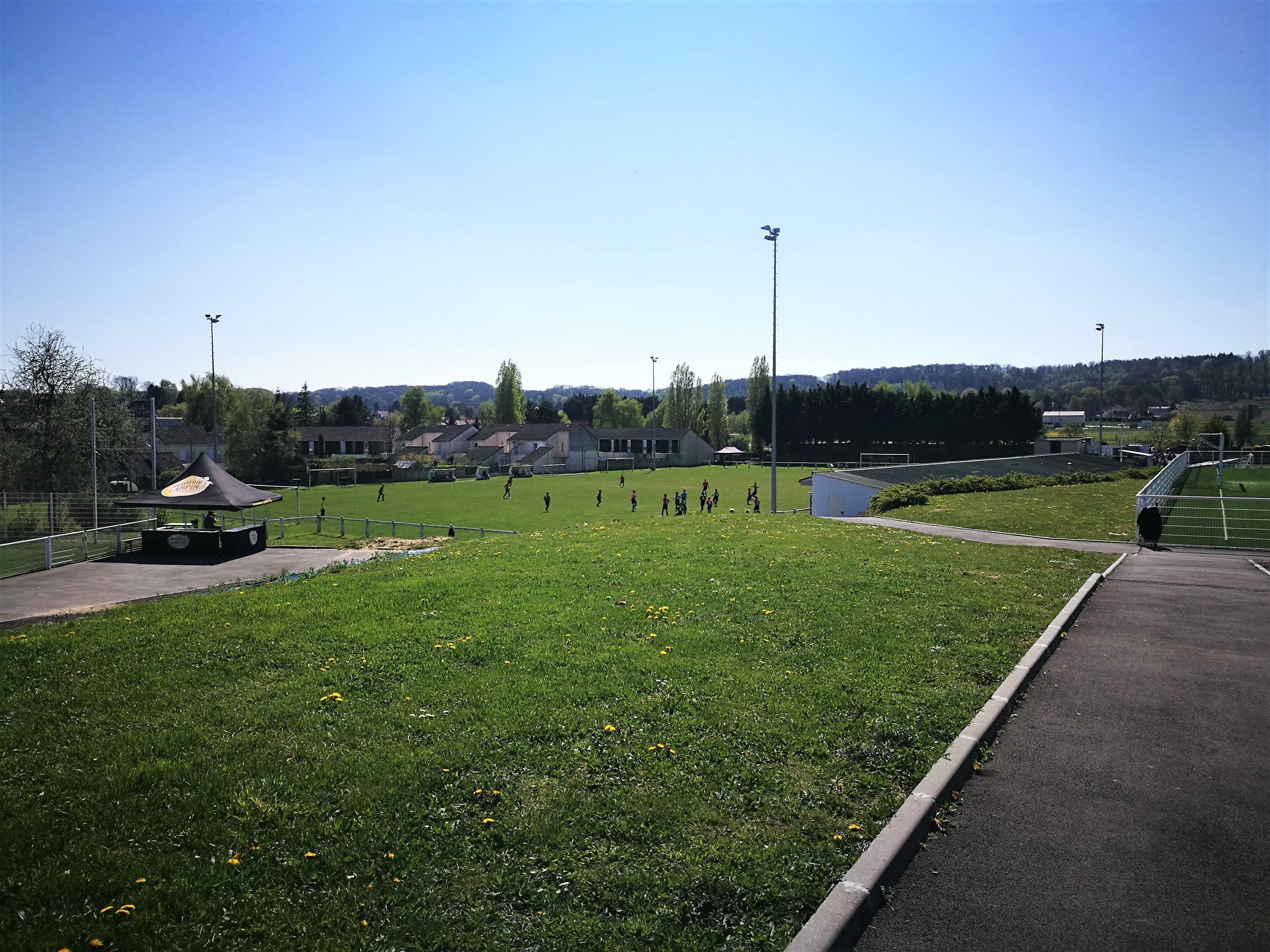

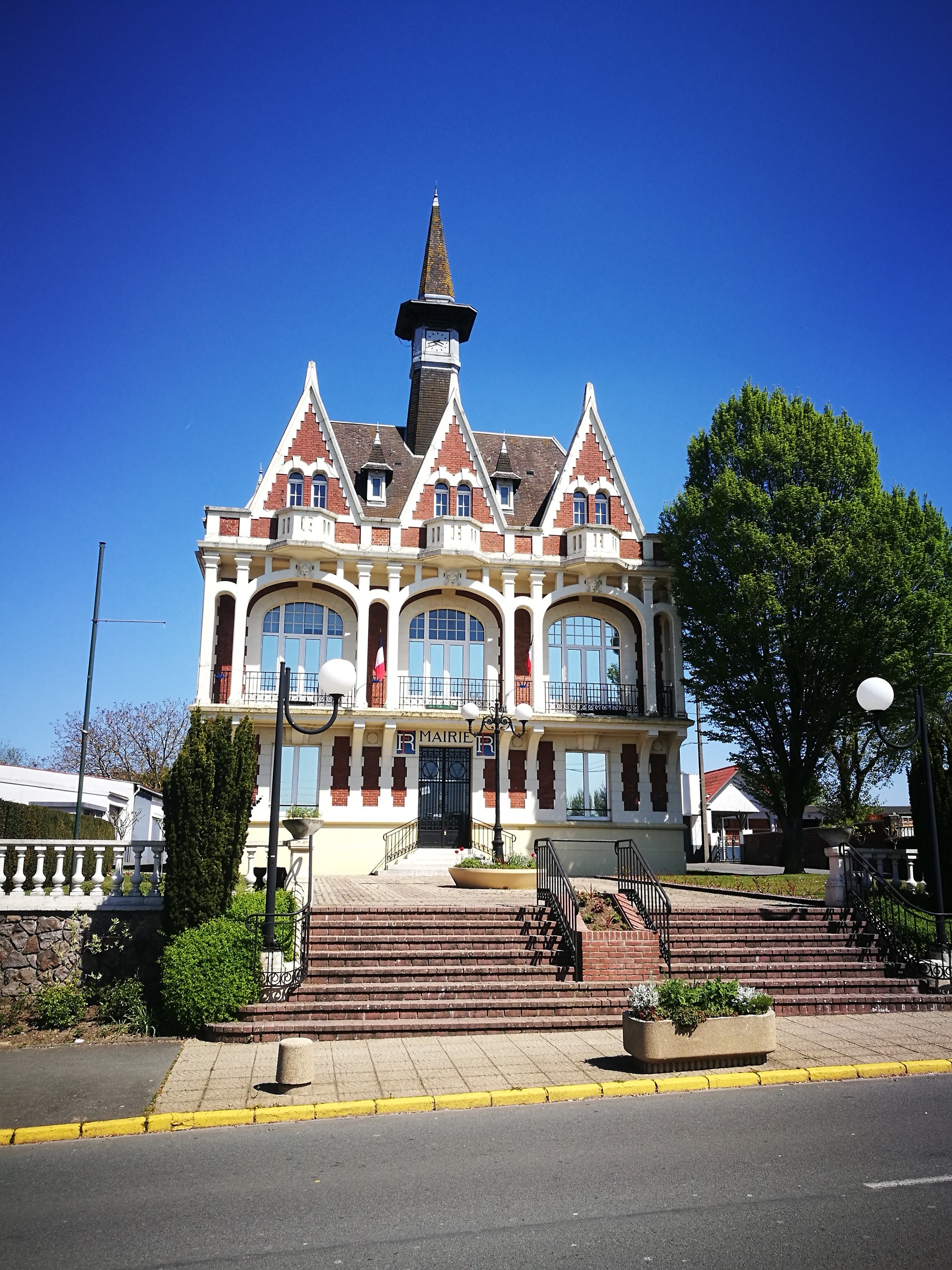

The second part of the journey was more fraught. The injury time meant it was 17.00 when I hit the road, and a traffic jam just south of Lille meant another 6-minute addition to the Sat Nav’s predicted 42-minute original prediction.
In fact, I lost a little more with a traffic light left turn into the road for the ground and missing the drive to the ground’s car park and hence picking a nearby street parking slot.
Still, I was in with time to ask the announcer to see the team lists before the players came out, so all was well.
Tourcoing is very close to the Belgium border, we are talking yards, not miles, and the surrounding streets have a Belgium feel. No two neighbouring house have the same frontage or indeed the same roof height.
The tight ground with a bar behind the stand, a food stall to one side and urinals that were not behind closed doors also feels more Belgie then French.
The feature of the Stade Van de Veegaete is an old stand, with the roof supported by concrete pillars about half way back. Access was available on three sides, but not the far end where a row of bushes and trees marks the boundary and an old building is close to the pitch on the stand side. As at Vimy, there are more sports pitches outside.
The game is one division higher than the afternoon match and is part of a full fixture list, rather than a make up game. Visitors, Chantilly are already relegated before the game, and will be in the Picardie section of the next level. The home side are just in the safe area, although safe areas in this league are movable.
National 3 had a nominal three teams per division relegated, but unlike England, the geographic borders are fixed so if an extra team drops from above, so a team is an extra team is relegated, while if the division does not take a team from National 2, there is a reprieve.
For this group, there is little chance of reprieve as Arras are coming this way – but if the National League 2 tables stay unchanged, it will be three down. There are two more from Hauts-de-France immediately above the relegation zone, so everything is still up for grabs
Hence it was important for Tourcoing to grab the points, and they did this in a reasonably efficient if unexciting manner. Despite this game delivering goals, the earlier one was the more entertaining contest.
Chantilly had nothing to offer and Tourcoing could have run up a big score if they had upped their game a little. Instead we have wide players who refuse to attempt to cross without first beating their opponent and attackers who are frightened to challenge for the ball in the area.
The goals were scored around a quarter of an hour into each half. The first half one coming when a player beat his opponent and crossed for a short-range knock in. (An almost identical build up a little while later resulted in the same player managing to lift the ball over the bar from three yards out).
The second half goal came when one of the wide players, Adim found himself in space in a more central position. Frustrated with not having a player to lose the ball to, or a misguided cross to deliver, he instead shot straight into the goal.
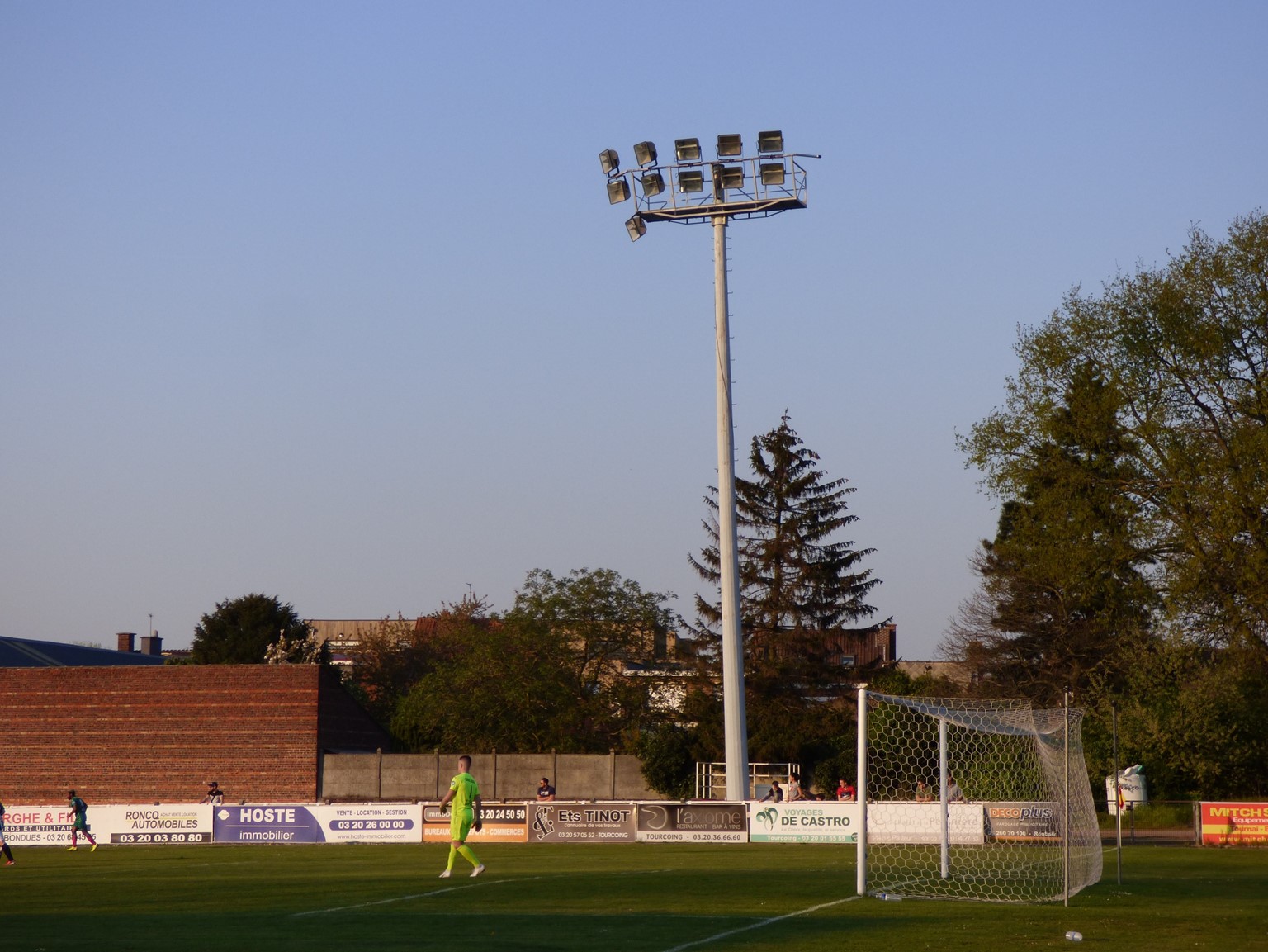
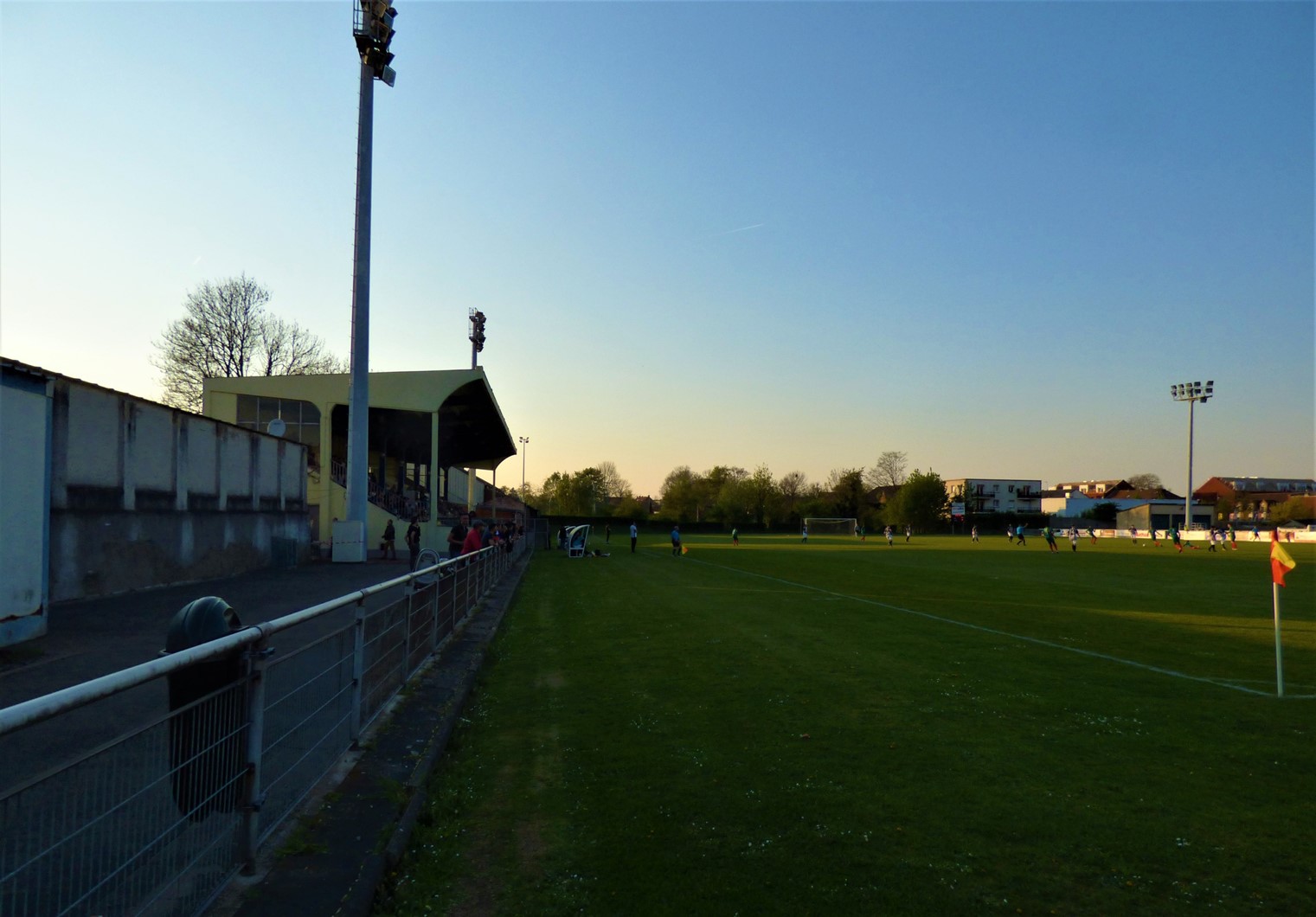
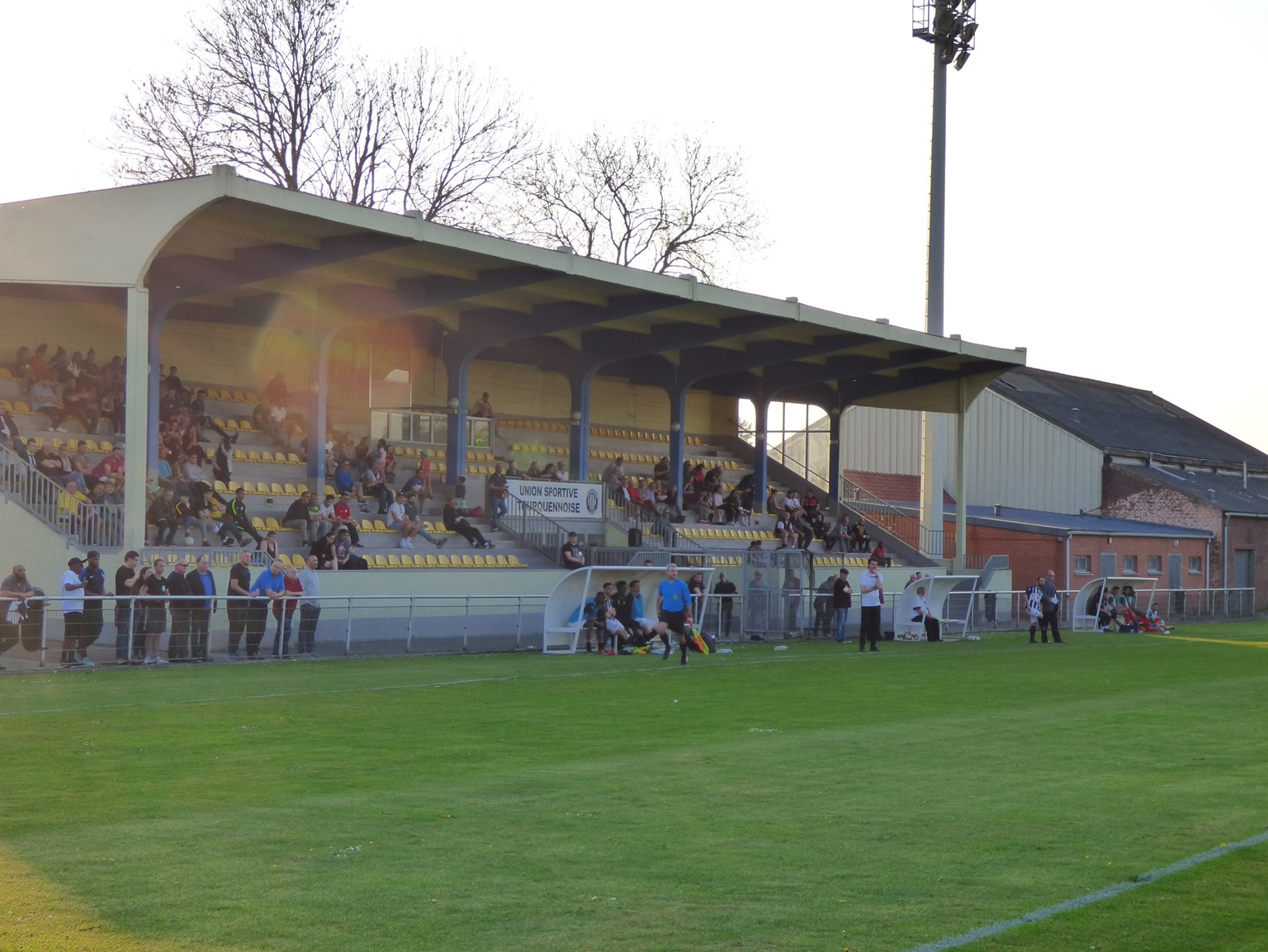

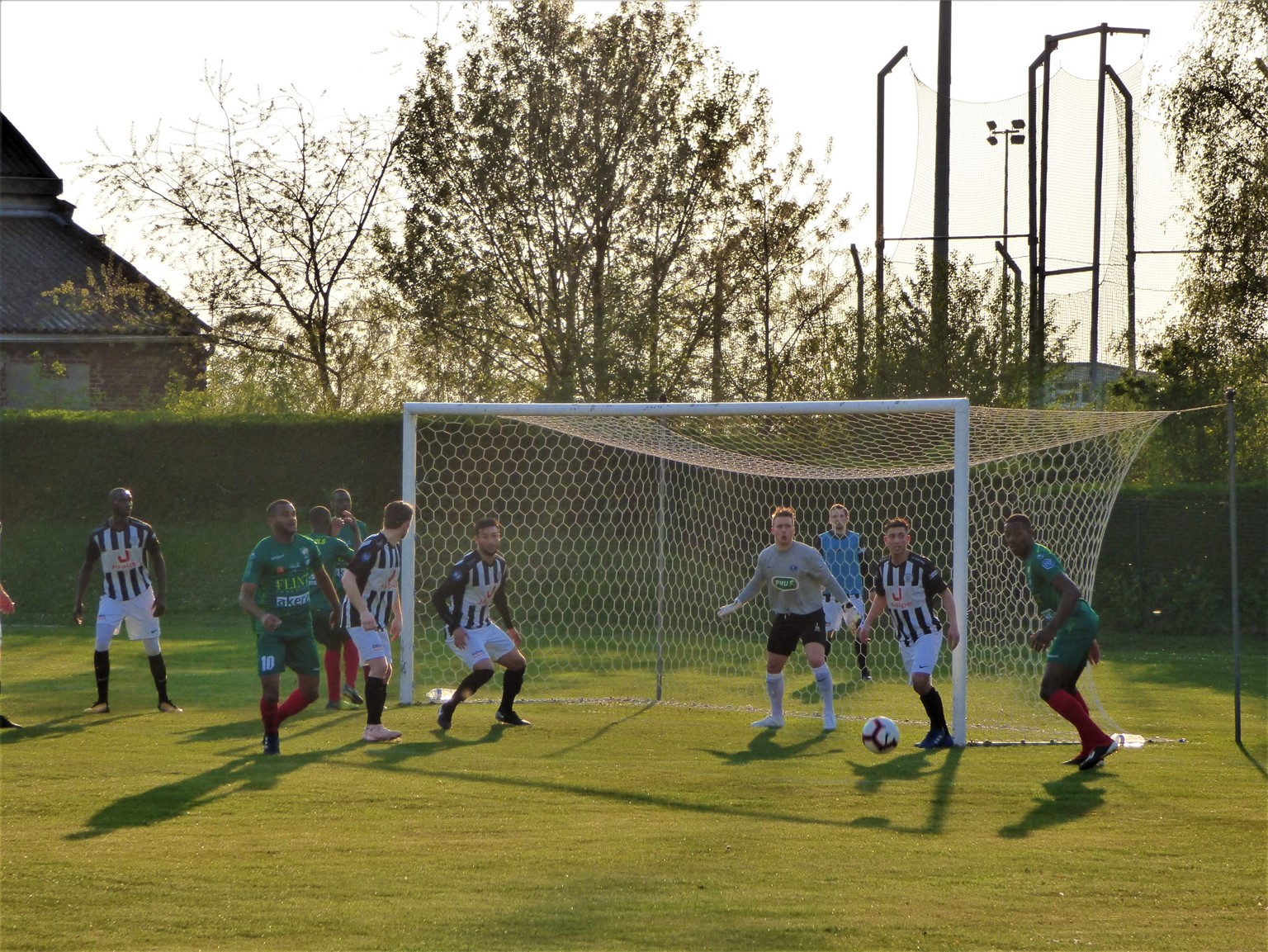
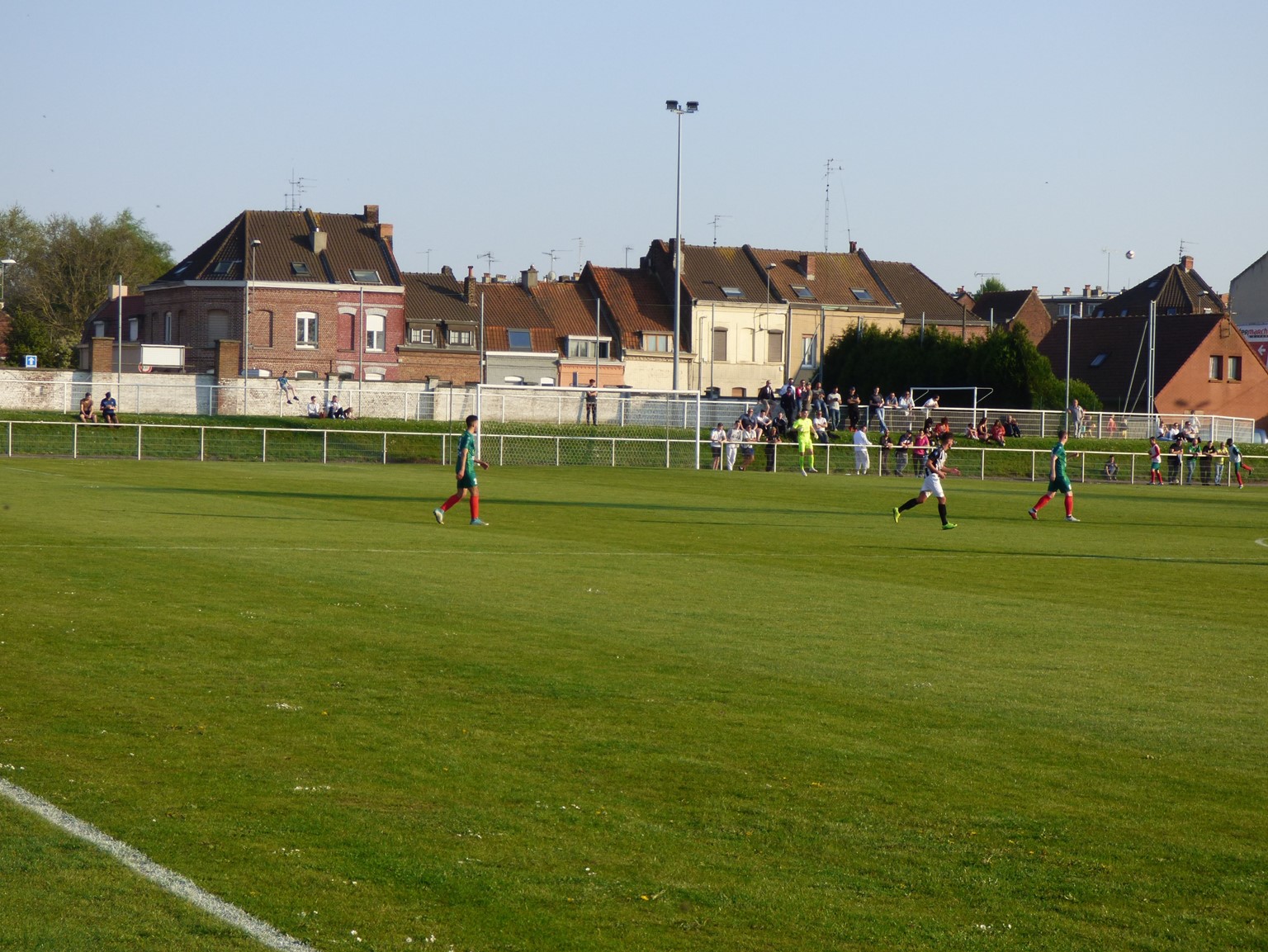

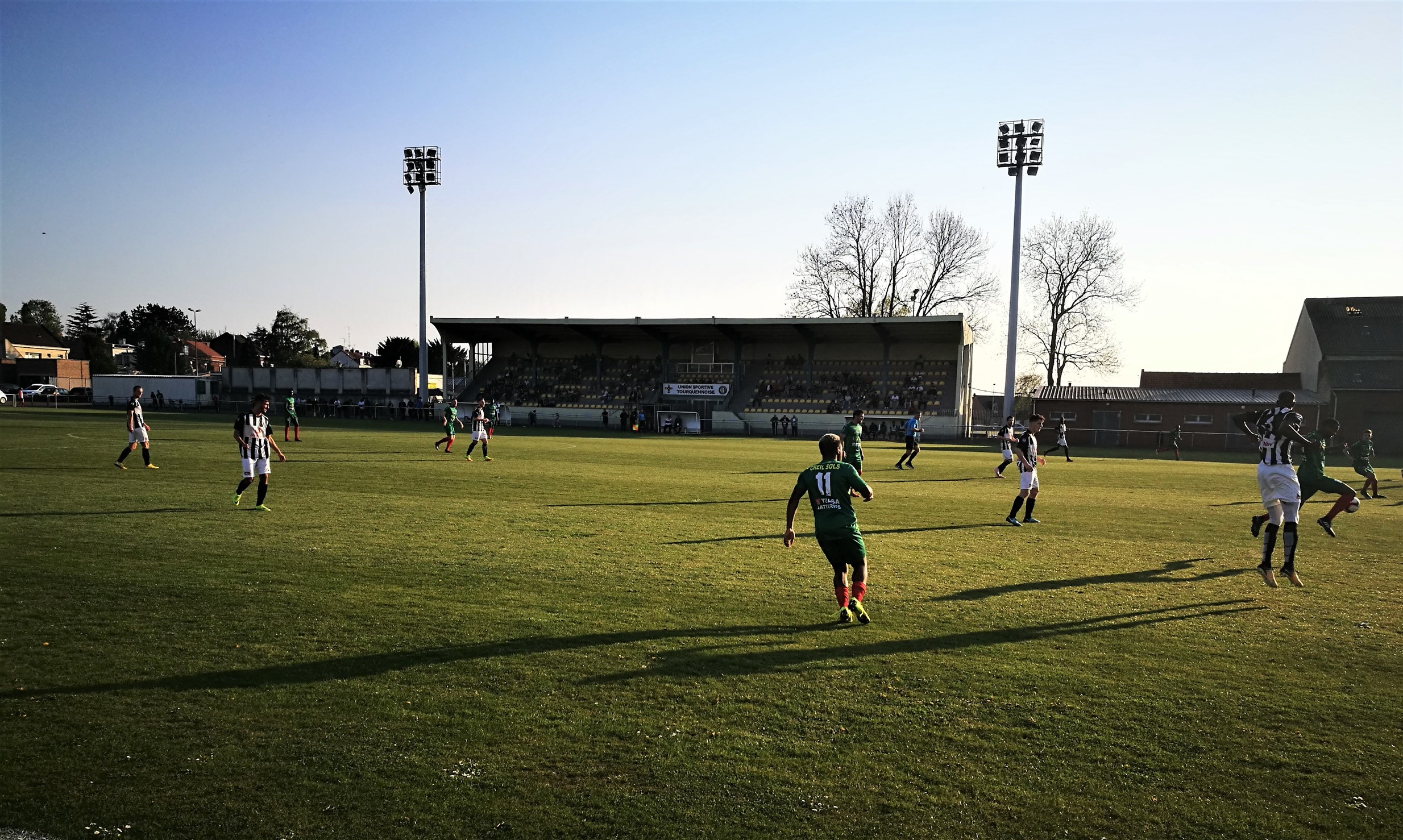

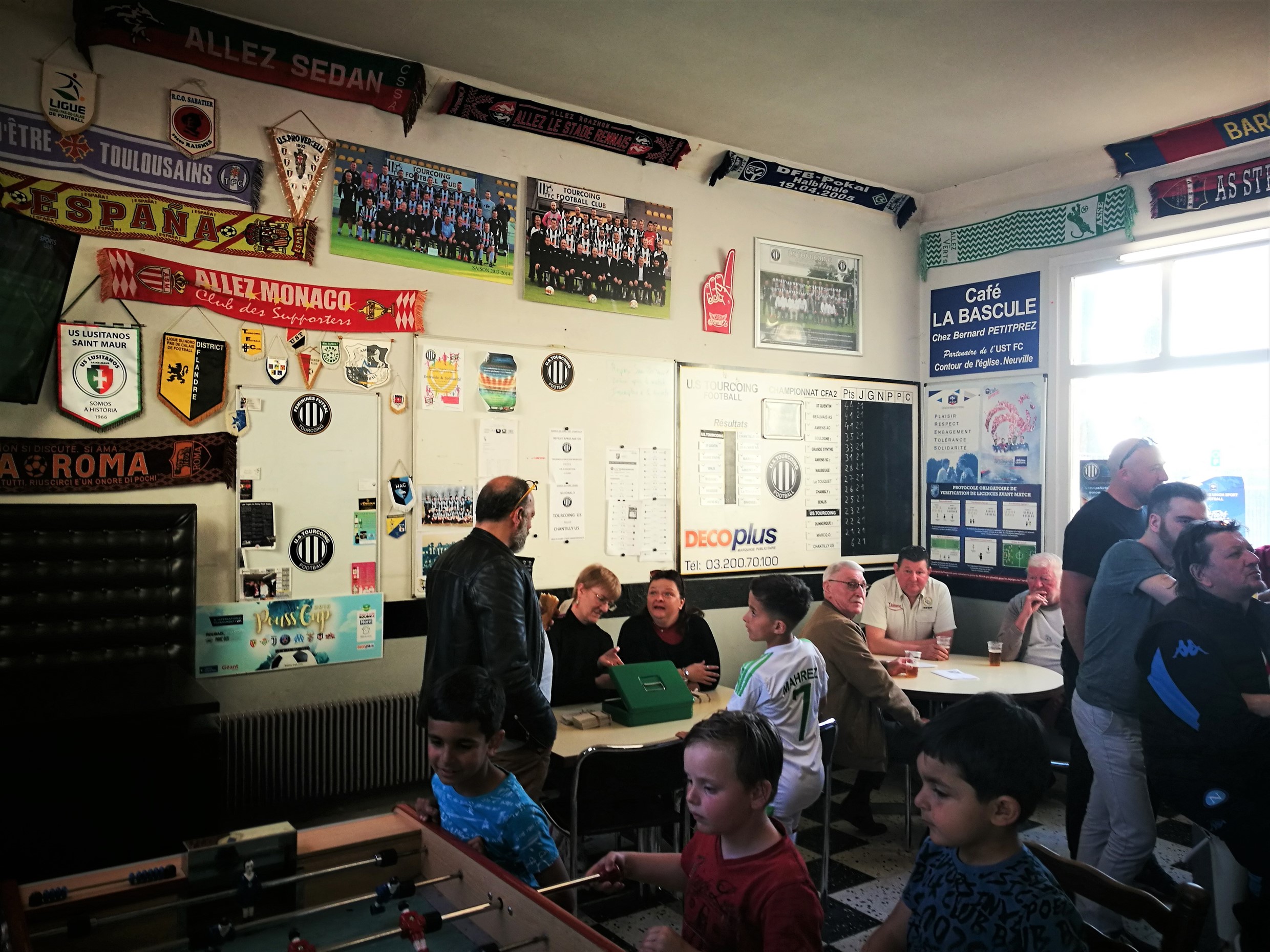
Switching to Belgium for Ground 4001, I went to Saint-Symphorien – just outside Mons and not much over one hour’s travelling from my overnight rest. The place itself does not come to much, it is not apart from the built-up areas of Mons, and has a small centre with a church and a café. The ground is right on the edge of the village. It has a small covered area along one side, while the rest is for standing only. By the standards I am used to in Belgium, the bar area is quite small, and unusually the lady is selling match tickets here. You pass through the bar to get pitch side.
The bar itself is selling for cash – at most grounds, the cash desk is separate to the bar and you collect tokens for your drink. It is a system I have always found works well as I can pay up for the half time coffee before the game starts. This in turn speeds up the selling process at the break, unless you suddenly realise you have to queue twice.
Many of the clubs in Belgium manage a great deal of success in persuading local companies to add a little sponsorship, and erect the boards on high scaffolding in prominent areas. This one has less of this, and the sponsors boards are used as infill for the barrier, and there are still some gaps around the pitch. Typically, there is a floodlit training area and second pitch behind one goal, with a third pitch visible behind this.
The floodlight pylons for the second pitch are old concrete type, while the main playing area has the modern, thin and metal pylons. It has been quite common for teams to have floodlights for training and on secondary pitches, while not providing them on the main surface.
The game gives me the third scoreless draw in the five matches on this mini-trip to France and Belgium. It is, however by far the most entertaining game of the quintet. The reasons for this were quite simple – both teams were quite committed at all times to trying to win the game. The tactics they used were also those that amateur players can comply with. Get the ball forward and make sure that there are people in the danger zone when you deliver the ball.
There are still more than a few pointless shots from distance that end up miles from the target, but defences have to work a lot harder than in the French amateur and semi-professional levels to clear the lines.
It is also a relief to see a wide player and his full back work together on the wing, so as trying to beat a defender and put a cross in is not the only option. (It appears to be compulsory in France). The simple act of touching the ball back a couple of yards when you route is blocked by two defenders means the ball is delivered to the area far more frequently.
The visitors, RCS Brainois came into the game two points ahead of Union Namur at the top of the table, with two games to play. A visiting supporter I spoke to told me they had already missed several chances to tie up the title.
Despite having to wait on one of their players, Brainois had the better of the first period and a good deal of the second. After picking up a copy of the team sheet, I had to ask as the Brainois team was a player short. I was informed the player who they were waiting on was Mathieu Vlaminck, a tall blonde striker who I felt was a Peter Crouch wannabee. He came closest in the first period, hitting the post. The photo of him is of this incident.
However, at the end of the game the force was with the home team and it would have been very plausible to see them snatch the win. The change in fortune occurred when Oumar Traore came on as substitute, and although his first attempt to strike the ball resulted in a mishit that went off for a throw on, he forced a fantastic block from the visiting keeper minutes later and later was brought down for a professional foul (or whatever this is called in an amateur league), meaning Brainois’ Natan Schallon left the pitch a couple of minutes before his team mates.
At 75 minutes, the referee called a short stop for the crowd to give a short round of applause. I was not sure exactly what this was for, but it appeared to be connected with home keeper Michael Cordier, who wore number 75.
Despite this, six substitutions, a sending off and the trainer on the field about three times, there was not a second of added time, leaving many of the visiting fans feeling short-changed as they needed the win. My feeling was that if we were to get a goal in those missing few minutes, it would have left Brainois without even the point they gained
I used to know the intricacies of promotion and relegation in Belgium, and it was always one of the most complex in Europe. At least when the national leagues were in a 1-1-2-4 pyramid, with no geographical constraints, every team had the same process to go through to gain promotion or avoid relegation.
The current reform came at a time when my number of trips to the country were tailing off, for mainly practical reasons. The new pyramid is formatted 1-1-1-3-4 and gets more complex because of the split in Flanders and Wallonia.
The top two divisions are the professional league. I say two, but it is really just one and a half as the lower division gets by with just eight teams.
The third level, also National is called the First Amateur League. In reality, this is fully semi-professional and quite a good standard of football, teams and stadiums. Subject to licensing rules, there is promotion and relegation between this level and the professional leagues.
A team relegated from the First Amateur League drops to the Second Amateur League, which has three divisions, two for Flanders, and one only for Wallonia. The logic for this was that there are more Flemish clubs than Wallonian. Certainly, when I was picking up the teams at the third and fourth levels in the old league, I did spend more time in the Flemish speaking areas.
The next level down is the Third Amateur League, which has two division in each region. This means that for a team at third level in Flanders, there is a choice of two leagues to be promoted to, while in Wallonia, there is only one division of the Second Amateur League, restricting promotion places. Still, all champions go up along with at least one play-off winner.
The play-offs still give places to period champions, and at this level (30 game season), the three periods are the first ten games, games 11-20 and the final ten games. A postponement does not change the period a game is in. RCS Brainois won both the first two period titles, so are guaranteed a shot through the play-offs whatever may occur in the championship
Still, this result drops them behind Union Namur for the first time this season, and the play-offs are not the place for a off form team to try and rescue their season.
An odd twist is that while this is the first season at this level for RCS Brainois, promoted from the provincial leagues last season, Namur were due to be relegated not just to the top provincial league (as they ended in a relegation place), but one division more for financial reasons. They rescued their place at the fifth tier table, (as opposed to 7th) with a close season merger with Fosses-la-Ville who had managed to win promotion from the provincial league to the Third Amateur. Hence the official name of the Namur team is now Union Royal Namur Fosses-la-Ville
